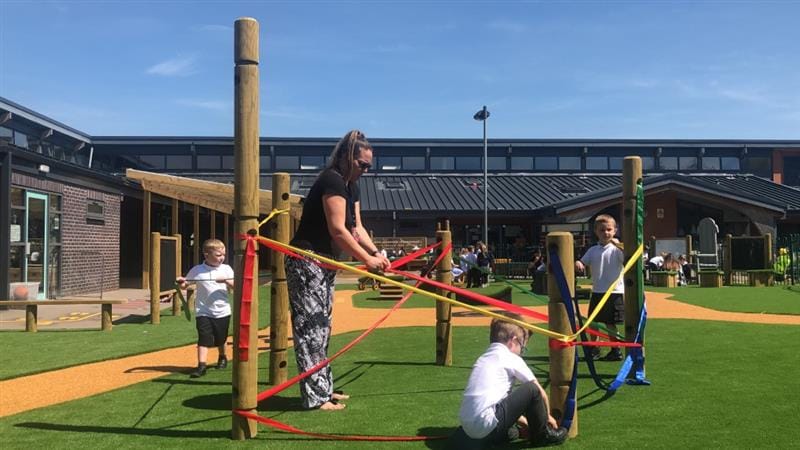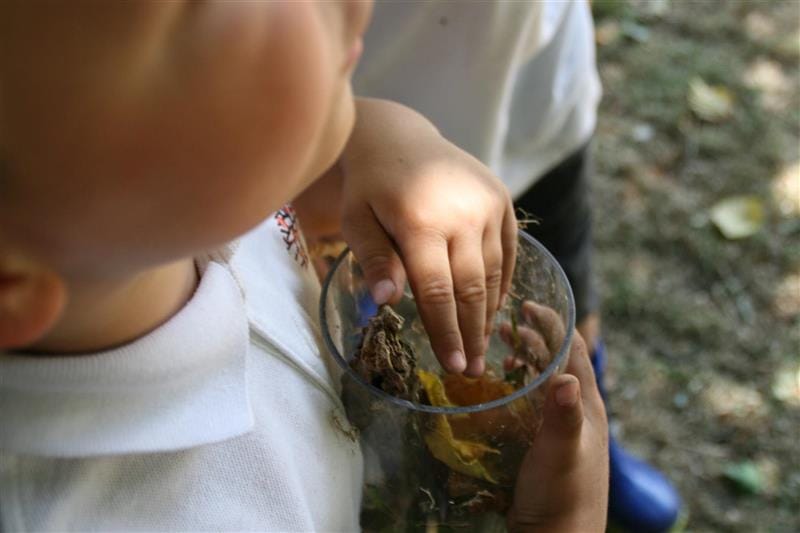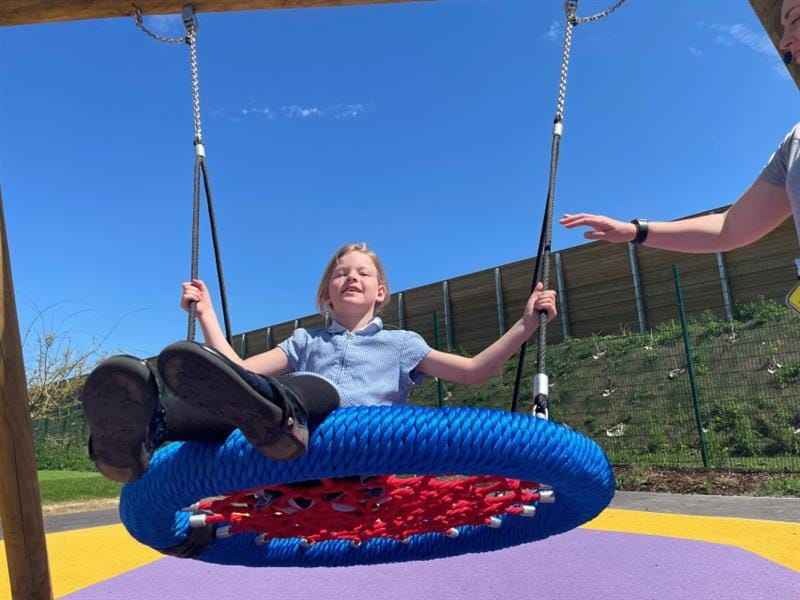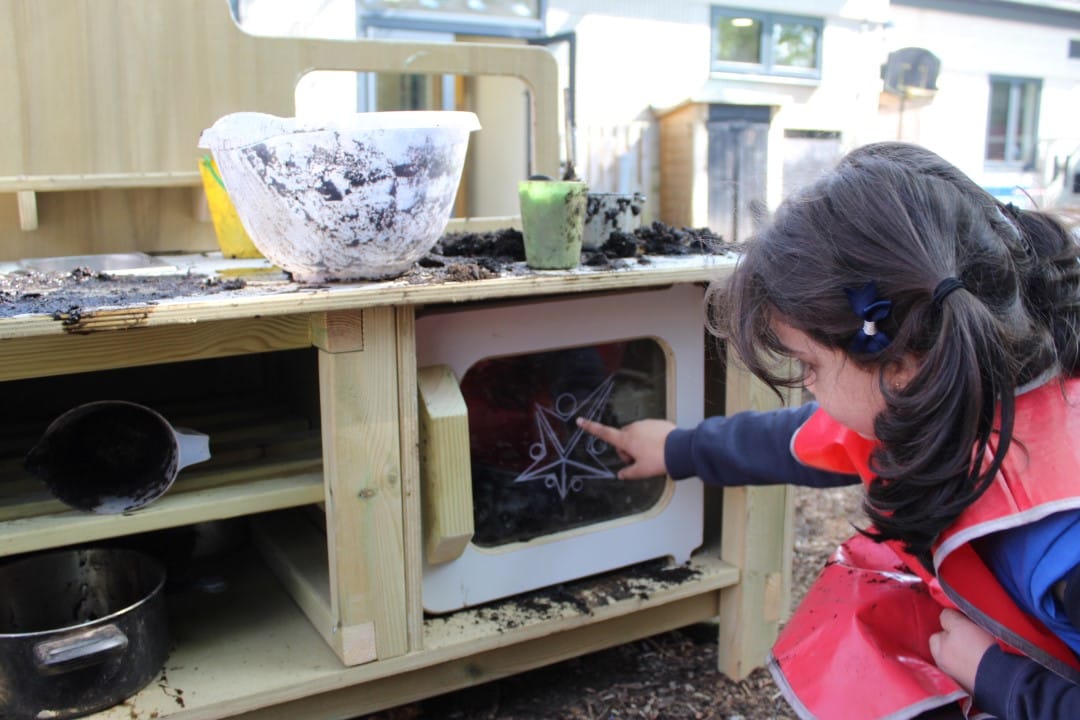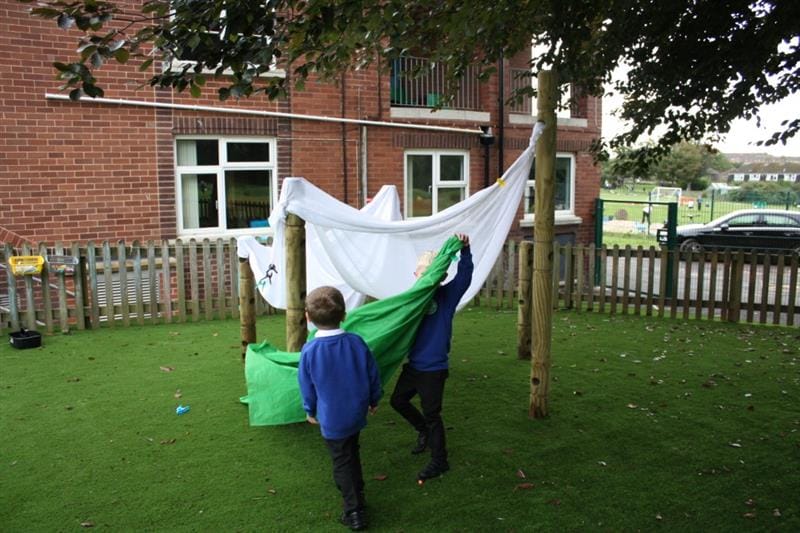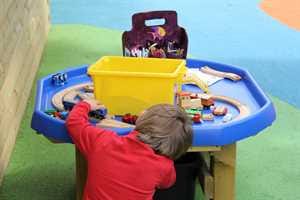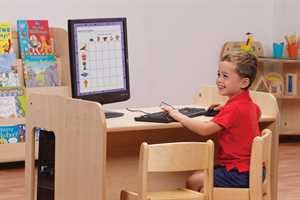
Children's Health
Understand how today’s children spend much less time playing outdoors compared to previous generations!
When I ask my five-year-old ‘What did you do in school today?’ I will often be met with the one-word answer ‘Play!’ My daughter really values ‘play’, for her it brings joy, fun, excitement and curiosity. Play allows my daughter to go at her own pace and gives her time to discover and practise new skills.
Both of my children are often happiest when playing outside, moving their bodies and showing interest and a keen desire to explore their environment. When children are feeling happy and content, they are usually motivated to achieve and can overcome difficulties.
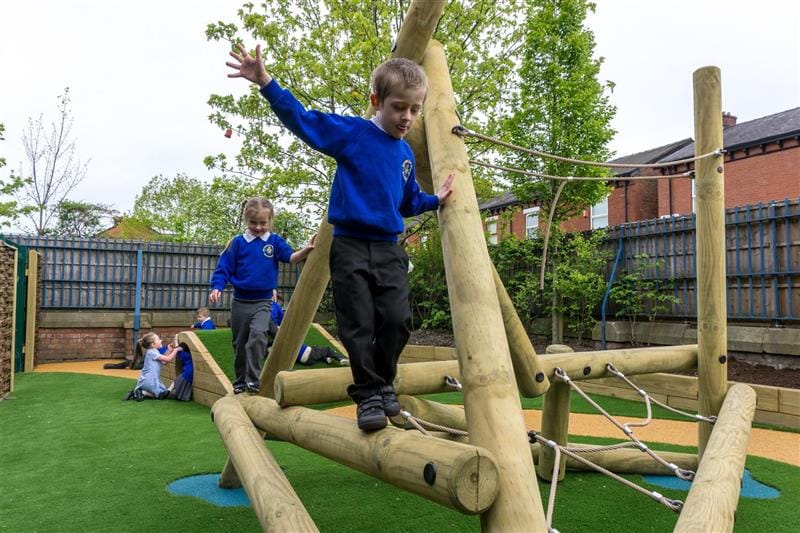
I believe that play can take many different forms depending on interests and stages of development. When you observe a class in play some children will be sitting quietly in the tree house, some using leaves to create a campfire, some running and chasing, pretending to be their favourite superheroes and others using crates to make an aeroplane. Pupils will be exploring materials and discovering and refining skills through practice.
Educators, Rachel and Margaret McMillan created an ‘open-air nursery school’ in 1914, where the physical movement was considered to be vital. Margaret believed that children needed space to run, explore and feel and the school garden encouraged responsibility, with pupils looking after plants and animals. The McMillans strongly believed that children learn through exploration and prioritised learning outdoors and child-led play.
Today’s children spend much less time playing outdoors compared to previous generations. Electronic toys and digital screens seem to be commonplace and childhood obesity levels continue to rise.
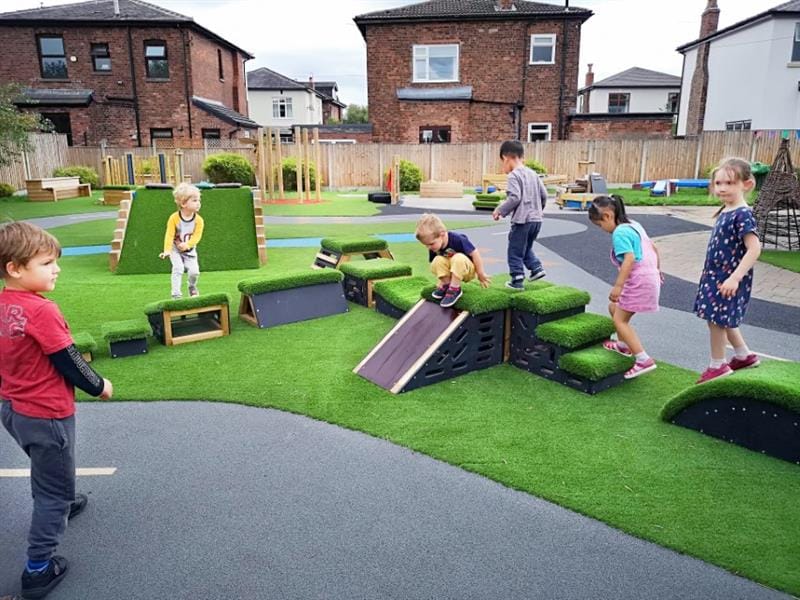
There is increasing evidence to link the decline in outdoor play to the rise in children’s mental health issues. Are we giving children enough time to discover their own interests and motivations and follow their lead?
Run Free in the Outdoor Environment
When you think of a place that brings you joy and peace it is probably a natural space. An outdoor environment can provide pupils with plenty of opportunities to play within nature, improving children’s mental well-being. Professors Stephen and Rachel Kaplan developed Attention Restoration Theory (ART) in the late 1980s. ART suggests that exposure to nature is not only enjoyable but can also help to improve our focus and ability to concentrate. Laura Thal (2004) explored the effects of 20-minute walks in natural and urban areas when observing symptoms of ADHD. Those who completed the nature walk reported reduced ADHD symptoms.
Exposure to nature can help children to regulate their emotions, improve mood and release feelings of stress or anger. Mindfulness encourages children to be fully present and engaged in the moment. Pupils can practise mindfulness within nature by:
- Observing water at a table or in puddles. Pupils can touch the surface of the water and explore how many ripples they can make. Can they use natural items to make ripples such as sticks and rocks?
- Finding pebbles and using them to create a tower. Pupils will need to find out the best way to stack the pebbles which develop hand-eye coordination.
- Creating some natural art by drawing on and threading leaves, painting sticks or making models by arranging natural items into clay.
- Spending time in the sand pit, raking the sand and using sticks to create different marks and patterns.
Healthy Body, Health Mind
We tend to feel healthier when we have spent some time being active outdoors. Generally, when children move more, they think better allowing them to able to relax and feel calm.
Spending time outdoors can reduce the risk of children developing myopia. Being outdoors and focussing on objects in the distance gives eye muscles a chance to relax, especially after staring at a screen or learning in the classroom.
Regular exercise is also proven to be beneficial for children with asthma as it improves how well children’s lungs work, increasing stamina and helping children to feel less out of breath.
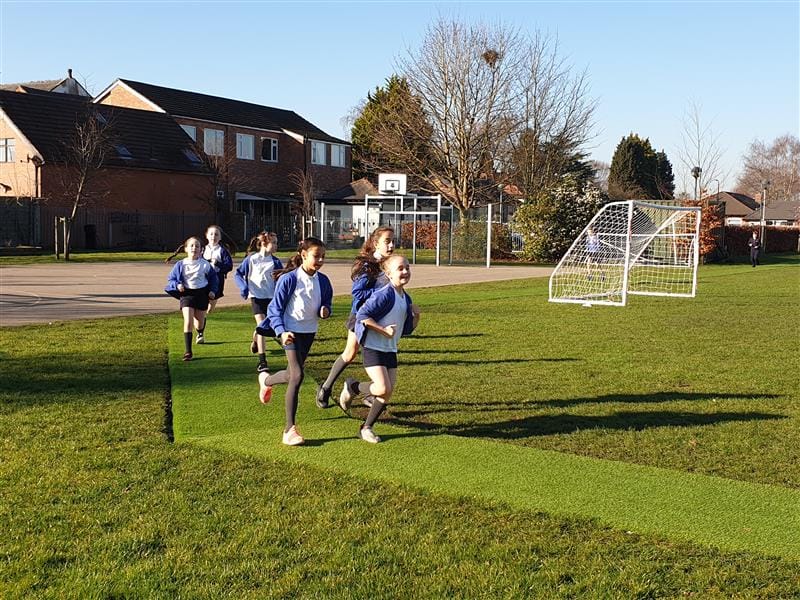
The Pentagon’s range of nature trails and climbing frames can provide a variety of obstacles, allowing children to develop physical skills. Pentagon products fit seamlessly into the natural environment, making clever use of space and enhancing views. Different levels can be created, offering various challenges whilst working on gross motor skills. When playing outside pupils are given freedom and space to climb, crawl, leap, weave and slide.
Stimulate the Senses in the Outdoor Space
Sensory exploration supports physical and mental development, it can help children to self-regulate and can be calming for those who experience anxiety. Sensory play helps to build new neurological connections in the brain, supporting cognitive development.
Pupils with sensory processing issues need time and freedom to explore an outdoor sensory environment at their own pace. An outdoor space can be engineered to fit a child and their specific needs. Some pupils may enjoy swinging, climbing, playing in the mud, walking barefoot or heavy lifting. ‘Internal’ senses also need to be considered when devising a play space.
Proprioception is the body’s ability to sense movement, action and location to other objects and know how to move accordingly. The vestibular sense involves receptors in the inner ear which send messages to the brain about where the body is and where it needs to go. Pupils with hyposensitivity crave fast movements such as spinning, swinging, sliding and jumping whereas those who are hypersensitive may be fearful of activities that require good balance.
Heavy work activities can help pupils to learn and focus whilst providing a sense of organisation and calm. Heavy work requires effort from our muscles, whether pushing, pulling or lifting. The movement creates resistance in our muscles which helps to calm and regulate the sensory system. Pupils develop body awareness when using a Rope and Pulley Materials Mover. Children need to use the correct amount of force when transporting mud, sand or water.
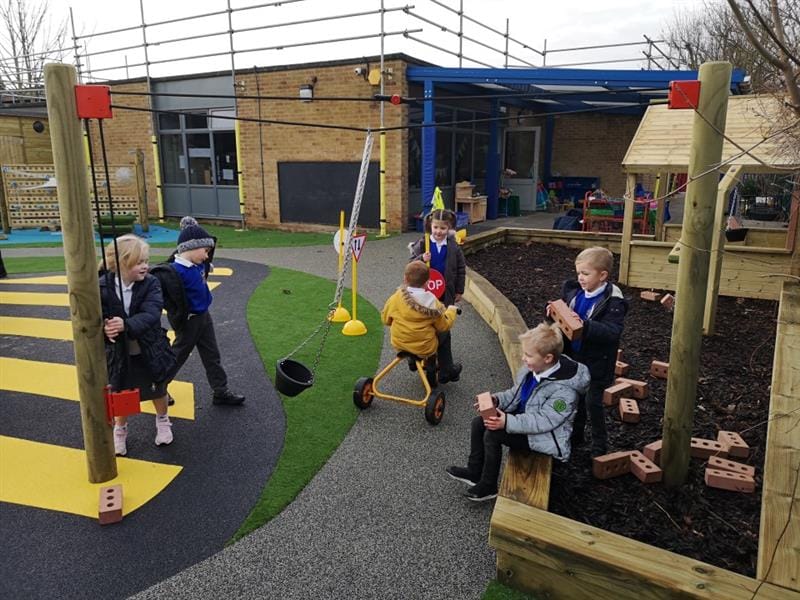
A mud box or a sand pit that children can get into helps to challenge the senses and children begin to understand cause and effect by making structures and patterns. Digging helps to develop gross motor skills and children naturally work together and engage in meaningful conversations.
Mud kitchens are a brilliant open-ended resource which help children to listen, take turns and co-operate.
Mud is a useful sensory resource which can help to boost the immune system. Learners begin to role play by becoming a chef in the kitchen or a parent cooking at home. Pupils develop social skills and emotional intelligence.
Creating in the mud kitchen whether it be mud cakes, wood chip pudding or painting rocks to use as food may help children to feel more relaxed and happier.
Water play can be both a calming and stimulating activity for learners. A water Play Package allows children to manipulate water in different ways. By experimenting with different tubes and funnels, water will be transported to different containers. Pupils can add water wheels, droppers, and sponges or scented fruit to provide a sensory element that is guaranteed to boost wellbeing.
An Environment for Learning Language
I believe that the outdoor environment is an ideal setting for children to learn language and communication skills. Natural learning environments develop children’s language skills through collaboration and imaginative and creative play.
Oral language skills are building blocks upon which literacy and numeracy skills can be built. According to research conducted by the charity, I CAN, 80% of children in some areas of the UK are starting school without vital language skills which can lead to low self-esteem, anger and frustration.
Ideas and tips for language building outside
Get Set, Go! Blocks can be used to create a variety of different obstacle courses. Pupils will be able to experiment using positional language, prepositions and verbs. Pupils can take turns carrying out actions and giving instructions.
Scavenger Hunt games where children have to state clues and search for different objects encourage children to use a variety of nouns and adjectives when describing.
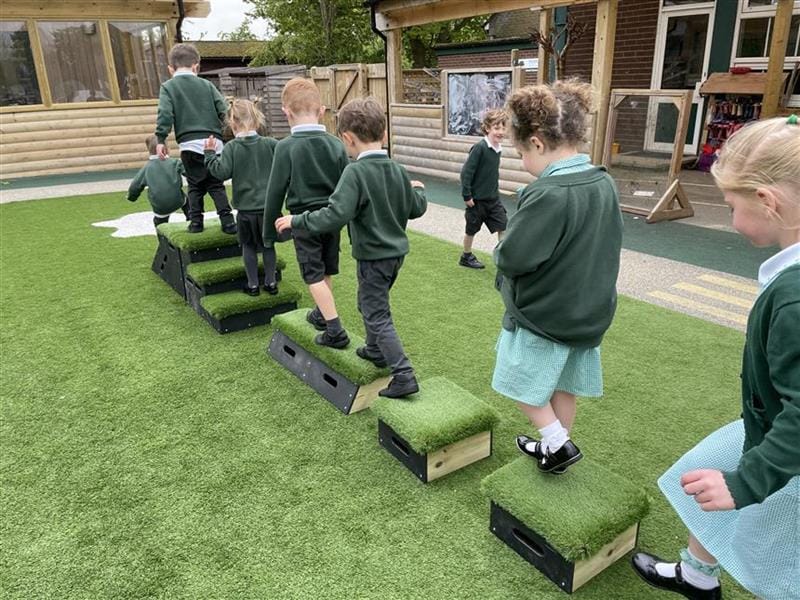
Learners will enjoy going on a nature walk around the outdoor environment, searching for points of interest and sounds they can hear. They could look for insects in the bug hotel using magnifiers or search for birds using binoculars. This is a relaxed way to converse with pupils, helping them to extend vocabulary and taking time to model language.
Children will enjoy dressing up and playing different roles when using the outdoor stage. Hats, scarves, dresses and props help to stimulate discussion and encourage children to project their voices in the outdoor environment.
Den building promotes meaningful discussion between peers and involves children giving and following instructions. Pupils can use natural materials such as sticks, straw, grass and flowers to create a den for teddy or a garden for the fairies
A Space that will Fascinate
It is a great feeling to watch a group of children almost bursting with excitement to enter their outdoor space. But what is it that makes them want to access the outdoor environment? Pupils need to be drawn to and interested in their environment. This could happen by naturally occurring phenomena in the outdoors such as rainfall, a rainbow or the first frost of the season.
It could be a sense of familiarity that pupils can play the same game and build upon the same skills that they practised yesterday. A physical space can present multiple play possibilities and certainly has the power to make children content and happy.
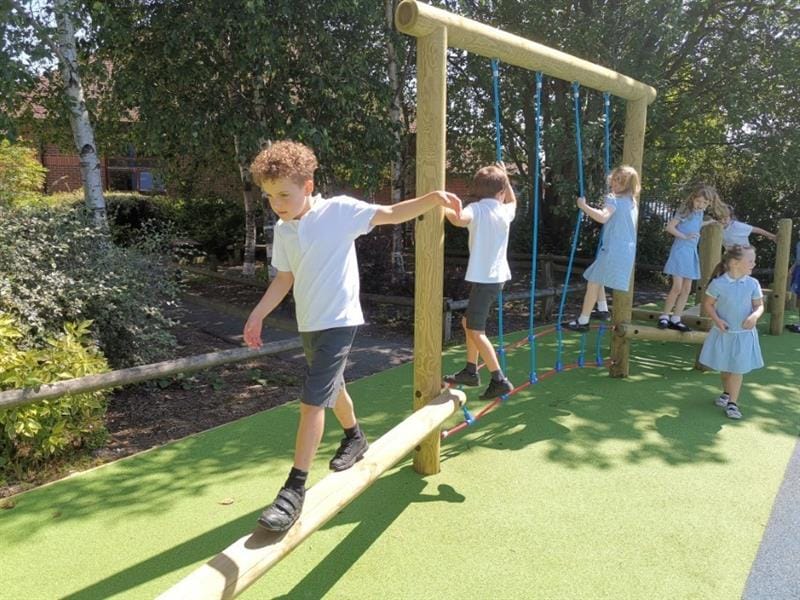
It is possible to easily create areas of intrigue in the outdoor space which can surprise children and help to build upon their interests. A secret object could be hidden in the tunnel, colourful bubbles could be added to the water table, tiny doors and rocks could be found in the planters or a new pathway around the space could be created using wooden logs. An air of mystery can be a fantastic stimulus for language development and creative writing.
For children, play brings together everything that they have been learning, know and understand.
Play helps children to explore real experiences and connections with others. Early childhood play is a powerful tool for life in the present and beyond. When children have access to outdoor spaces, they build physical skills and emotional competence, enabling them to move more and feel better.

